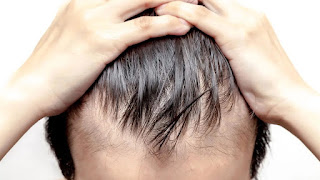PRP for Hair Loss: How Does it Work?
Hair loss and thinning hair are typical concerns in both men and women. Approximately 50 million men and 30 million women have experienced hair loss. It is more frequent beyond 50 or as a result of stress. And there appear to be hundreds of hair loss remedies, each with varying degrees of dependability and efficacy. Some, however, are founded on far more solid science than others.
PRP Therapy is taken from your blood using a centrifuge-like device that separates the material and increases the concentration of specific proteins that promote healing.
As a result, PRP may be used alone to treat tendon injuries and osteoarthritis Trusted Source. PRP injections may also help cure androgenic alopecia, according to research (male pattern baldness). Let's look at what the literature says about PRP therapy for hair loss, if it has any adverse effects, and what outcomes you may expect.
Procedure
The steps below are an example of a typical approach to PRP injections for hair loss:
A medical expert pulls blood from an arm vein.
They run the blood sample through a centrifuge.
The blood is spun in the centrifuge to separate its components.
A medical expert uses a syringe to retrieve the platelets.
Platelets are injected into specific places of the scalp by a doctor.
The procedure might take approximately an hour, and numerous sessions may be required. After PRP therapy, most people may resume their normal activities with no restrictions.
PRP hair loss: Does it Work
The science isn't definitive that PRP can restore or retain hair. Here are several potential PRP and hair loss studies:
Injecting 2 to 3 cubic centimeters of PRP into the scalp every 2 weeks for 3 months increased the average number of follicles from 71 to 93. This little research demonstrates that PRP may help boost the number of healthy hair follicles.
10 persons who had PRP injections every 2 to 3 weeks for 3 months exhibited increased hair number, thickness, and root strength. This study supports previous PRP and hair loss research. Ten people are too few to conclude.
A 2019 research examined two hair-treatment groups over 6 months. 20 participants used minoxidil (Rogaine), and 20 received PRP injections. Thirty patients completed the research, and PRP functioned better than Rogaine for hair loss. The study revealed that platelet count affects how successfully your plasma treats hair loss. A low platelet count may reduce PRP's effectiveness.
Wrapping Up!
Research supports PRP therapy for hair loss. Most research has been done with 40 or fewer persons. These findings may not work for everyone. Your blood may not have enough platelets to restore hair with PRP injections. Revive Hair and Skin can help you if you are looking for the same. They offer the best possible services. Refer to their website for more details!
%20(1).png)


Comments
Post a Comment